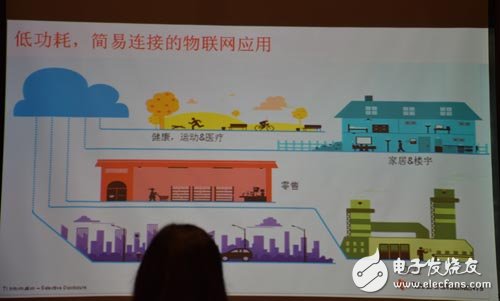According to Forbes, from the latest popularization survey results, the development prospects of the Internet of Things are bright. According to a survey of 512 IT executives and business executives by the Computer Technology Industry Association (CompTIA), 80% of organizations have a more optimistic view of the development of the Internet of Things than a year ago.
In China, the development of the Internet of Things has attracted the attention of many CEOs. In 2015, China's Internet of Things industry exceeded 750 billion yuan. The number of M2M (machine-to-machine connection and communication) connections exceeded 100 million, accounting for 31% of the world's total. It has become the world's largest Internet of Things application market. The profitability of the Internet of Things is second only to the United States.

Figure 1: Mr. Wu Jianhong, Director of Texas Instruments China Business
On October 20th, IGRS "Multimodal Networking Technology Standard and Chip Module Release Conference" was successfully held at the Westin Shenzhen Nanshan Hotel. Mr. Wu Jianhong, Director of Texas Instruments China Business, shared with more than 200 audiences. The status quo and prospects of China's networking wireless market.
The five business components of the Internet of Things
Mr. Wu Jianhong pointed out that recently, the global Internet of Things market has developed rapidly. Although the fragmentation of the Internet of Things is serious, the five business models of the Internet of Things are becoming more and more clear. He introduced the five major business components:

1. Health, sports and medical IoT applications included in wearables.
2. Internet of Things applications in smart homes and smart buildings;
3. The application of the Internet of Things in the retail industry, including electronic tags, to convey product information to users in supermarkets, as well as positioning applications.
4. Internet of Things applications in smart cities.
5, industrial automation will be applied to the Internet of Things technology.
Wu Jianhong believes that different application scenarios have different requirements for the Internet of Things. These applications have different requirements for the collected data and the transmission rate. In the end, a technology can satisfy all the needs? The answer is not necessarily.
Why do we talk about multimodal connectivity? Wu Jianhong analyzed that to ensure that different objects in different scenes, through different protocols, how to connect is a difficult problem nowadays. China lacks these standards. Why is multimodal networking important? When the Internet of Things is connected, the point-to-point is the main point. Taking the mobile phone as an example, the mobile phone and the object are connected point-to-point. In the network part, at most, the connection is mainly based on WiFi. Is WiFi the best? Currently, WiFi can connect devices and connect with the cloud.
Wu Jianhong believes that the advantages and disadvantages of WiFi are obvious. For example, WiFi has large power consumption and poor encryption. Can it be used in different fields? Included at home, throughout the building, applications requiring multimodal networking. How to ensure the security of the building network? Control the network, how to share network control rights to different people, and then control from a device in their hands to a certain part of the network? These problems need to be solved.
Multimodal networking can solve these problems. The Internet of Vehicles is growing rapidly in the coming years. Nowadays, how smart cars do autonomous driving requires a lot of sensing module networking, the connection between the car and the car, and the various components on the car. Including the remote control key and the condition of the car itself, the function of the wireless networking is required to transmit the data to the user's mobile phone or to the cloud. We see the multimodal networking section and come up with a good solution to these problems.

Figure 2: TI offers the broadest selection of products in the industry
TI offers a wide range of wireless access products, as well as ICU products, including wireless products, sensor products, and devices that are needed when it comes to the final device. We are very pleased to promote this standard with IGRS, and we are also very interested in providing engineers including wireless and sensor parts to China.
CSRME safety controller is developed for standard GB27607. By monitoring machine tool safety related equipment, the security of machine control system can meet the requirements of GB27607, and its security meets the requirements of ISO13849-1 (PLe) and IEC61508 (SIL3).
With rich interfaces, CSRME has limited programmable function. It can simultaneously replace many different types of safety control modules or safety PLCs, thus greatly simplifying the safety design of machine control systems and reducing cost.
Safety Controller,Modular Safety Controller,Safety Controller,Electrical Safety Controller,Programmable Logic Controller,Banner Safety Controller
Jining KeLi Photoelectronic Industrial Co.,Ltd , https://www.sdkelien.com